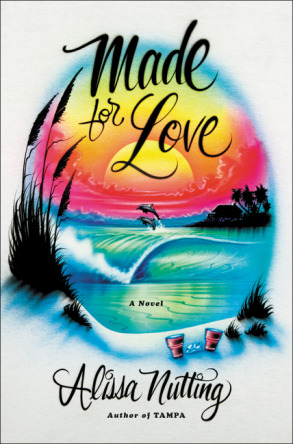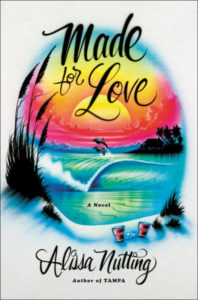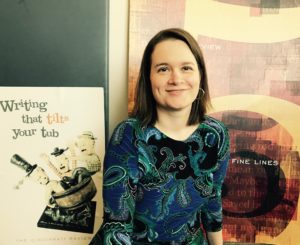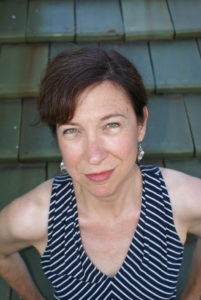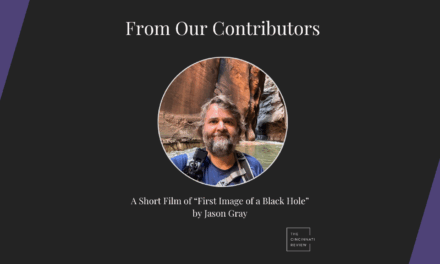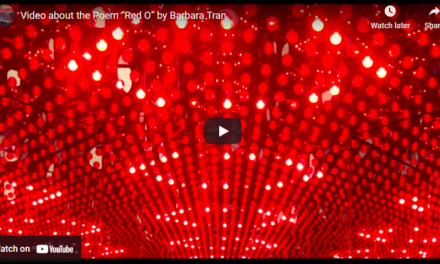In every issue of The Cincinnati Review, we include a fiction review feature, most often with three takes on the same novel. In issue 15.1, out this past May, Ally Glass-Katz, Drew Johnson, and Margaret Luongo wrote about Alissa Nutting’s Made for Love (Ecco, 2017). Late this summer, after they had a chance to read what the other reviewers had wrote, two of those contributors joined me for a chat about the book itself and some larger issues in the literary landscape that our discussion raised (Ally Glass-Katz was unavailable, due to the timing). Below is a (very slightly) edited version of that conversation.
Lisa Ampleman: What was your reaction to reading all three reviews of Made for Love in our summer issue together? Did the other reviews reinforce your first impressions of the book or challenge them? Any surprises?
Margaret Luongo: I didn’t notice the Fifty Shades of Grey references—and didn’t pay much attention to the others—so I was surprised to read about them in Ally’s review. I’m not sure why I sailed past these allusions, but the fact that I did gives Ally’s point credence.
When I read Drew’s review, I thought, “This isn’t a book about technology.” I thought so little of that aspect of the novel that I mentioned it in passing at the end of the review. This is another laboratory experiment to look at human behavior, to show us how appalling and deluded we are. I do see your point, Drew; it would be cool for someone to show us how this time it really is different, and we are changed forever. I don’t think this book does that, but I also don’t think it promised that.
Drew Johnson: Like Margaret, I was struck by what Ally brought up—which afterward felt like the Shades of Grey Elephant in the Room. I had been reaching farther back . . . to all those hulking brutes of the nineteenth-century novel.
We’re having a very interesting and contentious Emily Brontë anniversary, with Kathryn Hughes just last month throwing some thoughtful rocks at Wuthering Heights in The Guardian, daring to doubt the continued utility of those pathological, moor-based relationships. This whole line of allusion made me think of one of my favorite Kate Beaton cartoons, about all three Brontë sisters.
And the Shades of Grey question seems important because ultimately Nutting is jammed up with her rich and powerful, but problematically two-dimensional, villain. Can a writer get at now with so flat an instrument?
Which is maybe the long way round to say I’m unsure just how to respond to Margaret’s idea that Made for Love doesn’t promise to engage with the novel’s huge amount of tech-related baggage. If that isn’t promised . . . then everything from Byron Gogol on down is just window dressing.
I do agree I don’t think a novel about technology would be very interesting, but I think a novel about how people engage (or don’t) engage with right now can be. Or, again, as Ally put it in her review, “Some novels exist outside of time. Others are written for a particular moment, like this one, in which we are so inundated with technology . . .” and so on.
The human/tech question is just so front and center.
Lisa: Yeah, my experience of the novel was that Byron wasn’t comfortable being in a body, this vulnerable and limited thing through which we experience life, and so the technology he developed tried to assert power over and control that.
I do agree with Drew that the question of technology is a key thread in the book, and that Hazel’s stepping back from technology echoes, in a way, the discussions we’ve seen in the media about the need to step away from our smartphones, etc. (good grief, there are even apps to help you do that now). But I also understand Margaret’s take: the technology seems to exist as a tool to incite further considerations about the basic elements of the human condition—connection with others, hunger, sexual desire.
In relation to that, and in response to Drew’s objections about Byron as a two-dimensional villain, a follow-up question related to genre(s): Did you two read this novel as falling within the (admittedly large) category of realistic novels? Or novels of ideas? Or something in between the two? My impression was that Nutting wasn’t trying to write a realistic novel at all, that Made for Love has the trappings of our very real world, but that the level of camp (an arm stuck in a blowup doll) and the technological inventions made it feel much more crafted. (In a way, it mirrors the emphasis on inauthenticity that Margaret raised as a theme in her review.)
Drew: Lisa, your realism question raises the specter of what was as I was reading perhaps most askew in this novel: the disjunction between the bonkers elements and the pedestrian-close third narration with which the novel meets them.
I think of writers who do let realism jump the tracks in this way, and more successfully. We’re in the great Muriel Spark’s centenary, and whether you’re talking about one of her more superficially straightforward novels, The Prime of Miss Jean Brodie (Macmillan, 1961), or one of her strangest, The Driver’s Seat (Macmillan, 1970), you’re seeing a more untethered approach. Things get weird—and the novel’s modes of telling do as well.
More recently, Percival Everett’s I Am Not Sidney Poitier (Graywolf, 2009) or Nell Zink’s The Wallcreeper (Dorothy, 2014) and Mislaid (Ecco, 2015) recall Spark’s tonal surefootedness in ways that Made for Love didn’t.
In Nutting, Byron gets weird, Dad gets weird, dolphins get weird, but the narration plods along, reading like a sort of what-if exercise response. I kept wishing that she’d chosen to have two first-person narrators—Hazel and Jasper—because I missed the confidently vertiginous weirdness of Tampa’s narrator (even as I cringe to recall it).
By the way, how did you both feel about this novel in relation to Tampa (Ecco, 2013)? Or Tampa itself?
Even if Byron is excused from being narrowly realist—and why not—my original argument was that he had little enough to do with what he seemed meant to represent: a Silicon Valley controlling maleness that has been much on all our minds.
Yet Miss Jean Brodie, however singular and even irreal as she can sometimes be on the page, still does a remarkable, slippery job of letting Spark talk about individualism and fascism at a particular moment . . . and I wonder what keeps a depiction in strange relation to what it depicts? Usefully so, I mean?
Margaret: Drew, I am so glad you brought up Muriel Spark! As for the way weirdness unfolds in her stories, her point-of-view shifts are so delicate at times—as if the omniscient consciousness telling the story picks up the characters’ thoughts as they swirl above London—I’m thinking of The Bachelors (Macmillan, 1960) here. Or a massive insight is revealed in dialogue and the narrative moves on, inflected by the idea though it’s never touched upon again, and nothing in the narrative changes because of it (Memento Mori). Or mystery after mystery is solved in an anticlimactic way by the omniscient narrator (The Prime of Miss Jean Brodie), as if to say, Oh, no! You thought the book was about THAT? Well, it isn’t.
It’s true Made for Love unfolds in a fairly straightforward telling. Aside from its plot points, I think its strangest mode is its dialogue. Everyone has a bizarre way of speaking, which makes for fantastically awkward and unnatural exchanges. I keep thinking of that dialogue between Jasper and Hazel near the end of the book. I do like your question, Drew, “What keeps a depiction in strange relation to what it depicts?” I don’t know, but I do find an awkward kinship in the mode of storytelling and its characters. But again, I’m focusing on authenticity (and awkwardness).
As for Byron, if he were developed in such a way to explore the more topical aspects of the story, I’m afraid we’d lose ourselves in that. And lose our sense of Hazel’s problem, which predates Byron and his technological advances.
I read Tampa a few months before I read Made for Love, which is why I went so strong on the theme of in/authenticity in the review. Tampa asks us to think about uncomfortable things, such as the range of human behavior and why we shouldn’t label humans “monsters.” I became annoyed with people who kept comparing the book to Lolita as a way to dismiss it. If I had read Made for Love without having read Tampa, I might have had a different take on it. What did you think of it?
Drew: You’re right about Made for Love’s dialogue. Maybe that was part of my first-person wistfulness . . . so that Nutting’s asides and the dialogue’s oddness could drive the train.
Margaret, your riff on Spark’s misdirections is sending me back through each plot in turn (that I can remember well enough). A writing teacher once pointed me to an essay about how much [French writer Alain] Robbe-Grillet meant to Spark early on, but for me that’s what makes her great: unlike Robbe-Grillet she pulls the curtain back over her novels’ strangeness and lets them read “normally” even as they get all the way out to Not to Disturb strange . . .
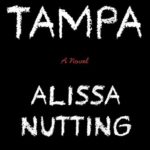 Tampa is so strong on so many levels: the sustained voice, the heist-like plotting, the single-mindedness of the narrative, the willingness to let the city (somehow) in without giving us much more than that remote-access (?) road.
Tampa is so strong on so many levels: the sustained voice, the heist-like plotting, the single-mindedness of the narrative, the willingness to let the city (somehow) in without giving us much more than that remote-access (?) road.
But Tampa’s greatest success is that hardest thing, a conversation actually centered on the book for longer than what I’ve come to think of a standard publicist’s calendrical interval. What was said, exactly? I’m not sure, but the book had enough presence to start conversations that weren’t merely repetition or affirmation. Even when—as is often the case—I agree with what’s being put forward . . . I learn very little. Nothing changes. Nothing moves. Tampa stopped the carnival for a moment, but what for? What did we make of it?
I’m not nostalgic for other critical eras I remember. Reading the New York Times Book Review while growing up in a small town in the pre–internet era was like trying to decipher texts from another country, even though I had one of the great independent bookstores at hand. And although the high holy lit-blogging era actually spent time talking about the topics that it fixed on, the authors considered were (in hindsight) narrow as hell.
Made for Love tries to bring so much to the fore, and—even if I’ve said it fails—I’m moved by the scope of what it tries to address. I do want the now here. What I really want, I suppose, is Tampa’s ability to say, “Stop, let’s talk about something,” but with the issues Made for Love tries to raise. And the reception I recall for Made for Love was brief, not really a discussion of anything except quick praise for Nutting and now let’s move on.
Meanwhile, Rachel Cusk just completed one of the great and absolutely pin-drop-perfect ending trilogies I ever expect to read in all my life, and there was no noticeable difference in the duration of the reception. Only a couple of essays went beyond this pro-forma interval on which I’m so obviously hung up.
Lisa: So, here’s a question as a way toward conclusion: What does a book need to have, to generate reception beyond what Drew’s termed “the standard publicist’s interval” (that first buzz of reviews and book-tour stops)? Or how can the literary community challenge the limitations of that interval?
Margaret: I don’t know what it takes to keep a book in the general public’s spotlight, beyond sustained presence on the New York Times’ bestseller list. Teaching books repeatedly does build a lasting audience for the author. As ever, we should be looking at the long-term, because the short-term is so miserable in terms of attention. I’ve read articles recently about what makes a book “popular,” and the information is not helpful, more along the lines of this particular genre published at this particular time of year. Or hitting a trend just right; telling a story the public wants to hear at exactly the moment it wants that story, not a minute before or after.
Drew: Yes: a strange thing to say perhaps, here at the end, but even popularity isn’t a guarantee of actual discussion, if by discussion we mean to say multiple reactions, and reactions to those reactions, instead of the same response multiplied by x, whether at length or at 280 characters. There’s the familiar experience of reading the same review of one book over and over again, by many different authors who’ve independently arrived at the same place. That doesn’t always feel like discussion, either.
Maybe revivals wind up generating more discussion per-pound-of-book? After reading Speedboat and Pitch Dark (both NYRB Classics, 2013), I picked up [Renata] Adler’s movie reviews, A Year in the Dark (Random House, 1969), from a favorite used bookstore (Grey Matter Books in Hadley, Massachusetts). The bemused owner said to me, “For years, you couldn’t give Adler away, and now, all-of-a-sudden.”
Maybe that’s where I find us: better at having any discussion at all in revival or rediscovery—or just straight-up discovery—than in the original moment. Maybe that’s because our own moment is even more cacophonous—for both very good reasons and the obviously bad—than usual?
Maybe we will talk about Made for Love in ten years and I’ll see all the things I don’t see now. And we know that some authors react to their reception or the lack of it and write a book they wouldn’t have considered before. Others don’t. Which is Nutting? Only Nutting knows.
One last thing that seems on point: I interviewed Lore Segal a while back. I love her work, particularly Her First American (Knopf, 1985) and her bizarre novella, Lucinella (Farrar, Straus, and Giroux, 1976). The latter had been recently reissued and billed a cult classic. To which she responded, “That book was not a secret book, a cult book. A cult book? Nobody knew it existed.”
I sometimes think of that when I read a new book, too, that it’s still, just then, a secret book, much-billed buzz or silence notwithstanding. That they all come to us as cult objects looking for cults. And then I wonder what kind of cult that cult will be. This was fun: thanks.
Lisa: Yes, thanks to you both!
Lisa Ampleman is managing editor of The Cincinnati Review.
Drew Johnson was raised in Mississippi and lives in Massachusetts. His fiction has appeared in Harper’s, Virginia Quarterly Review, The Literary Review, New England Review, Texas Review, Cosmonauts Avenue, and elsewhere. His nonfiction has appeared at Literary Hub, Los Angeles Review of Books, Paris Review Daily, and elsewhere. The Cupboard brought out his 7 Greyhounds (2013) as one of their single-issue chapbooks. More may be found at walkswithmoose.com.
Margaret Luongo’s short stories and reviews have recently appeared in A Very Angry Baby: The Anthology (Acre Books, 2017), Fiction Southeast, Consequence Magazine, and Five Points. Her most recent story collection, History of Art, was published by LSU Press in 2016. She teaches creative writing and contemporary fiction at Miami University of Ohio.

